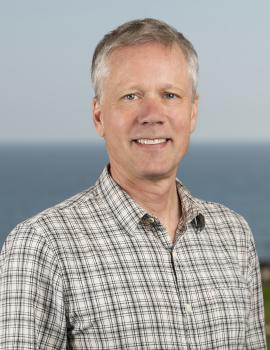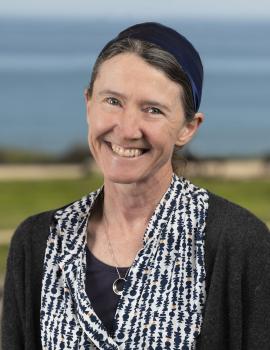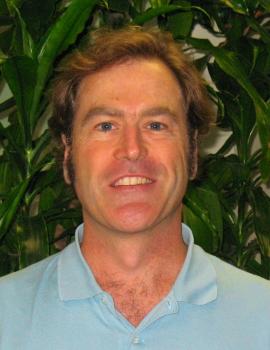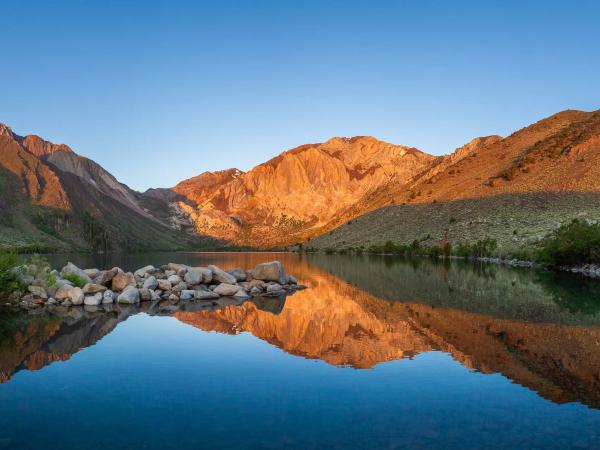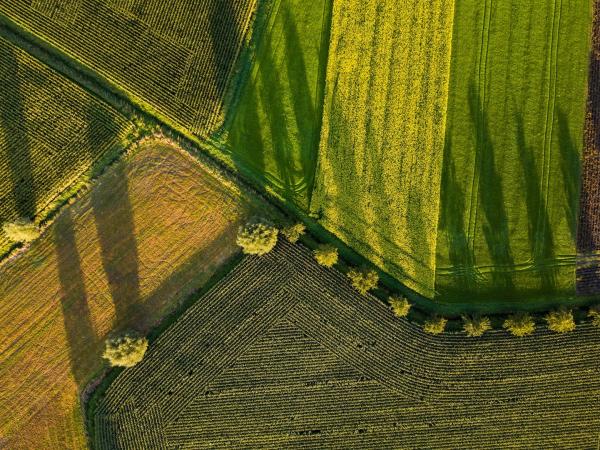
From Wildfire Prevention to Suppression
A study published in July 2022 in the Journal of the Association of Environmental and Resource Economists by Bren professor Andrew Plantinga is good news for Cal Fire and other state agencies responsible for battling California’s record-setting blazes: these organizations effectively protect valuable infrastructure from harm. The paper, which Plantinga co-authored with Randall Walsh from the University of Pittsburgh and Matthew Wibbenmeyer at Resources for the Future, is the latest from Bren researchers who have been assessing various methods of wildfire control.
For Plantinga, it began in 2013 when he came to the Bren School as a professor of natural resource economics and took the opportunity to explore an emerging but critical research topic: wildfire. Though California has always been prone to seasonal burns, wildfires had not yet become year-round headlines; at the time, the largest fire in recorded state history was 273,246 acres (the 2003 Cedar Fire).
Plantinga teamed up with fellow faculty members Sarah Anderson, Naomi Tague, and Max Moritz, who were all interested in wildfire science, land management and prevention, and wildfire threats to humans. The resulting initiative, SERI-Fire, was the first project funded by the Bren School’s Strategic Environmental Research Initiative (SERI) program.
There are three stages of wildfire management: stop them from happening (prevention), stop them from burning (suppression), and rebuild after they’ve happened (reconstruction). At its inception, SERI-Fire focused on the efficacy of prevention efforts, such as the controlled burning, thinning, or removal of potential fuels on a landscape, at mitigating wildfire spread.
Around 2017, California began to see a massive increase in the frequency and severity of wildfires. Since Plantinga came to Bren, the state record for largest wildfire has been broken eight times, and now exceeds a million acres (2020’s August Complex Fire). This got the SERI team thinking: with all of these wildfires burning, how effective are suppression efforts? In other words: are we any good at putting out wildfires once they’ve started?
Modeling Suppression
Answering this question requires a complex, spatial understanding of wildfire spread and a quantitative modeling process that must account for many factors, including wind speed, wind direction, and natural variations in the landscape. Until now, most models have only used these physical features to predict how a fire will spread.
As Plantinga puts it: “Uncertainty dynamics [relating to fire] tend to make it really complicated and hard to analyze…we know where fires end up, what assets are on the landscape, and what natural factors influence fire. But how can we compare where it would have gone with and without suppression, and what assets are in the way?”
To understand how resource allocation influences wildfire suppression, Plantinga and his colleagues built an integrated model, the first to account for effects of wildfire management responses.
The team overlaid wildfire spread over a given landscape with where fire suppression efforts were deployed and used this model to assess the spread and suppression of 1,503 western wildfires. Ultimately, they were trying to understand whether these fire suppression efforts alter the natural spread of wildfire—and whether they effectively saved valuable infrastructure in the process.
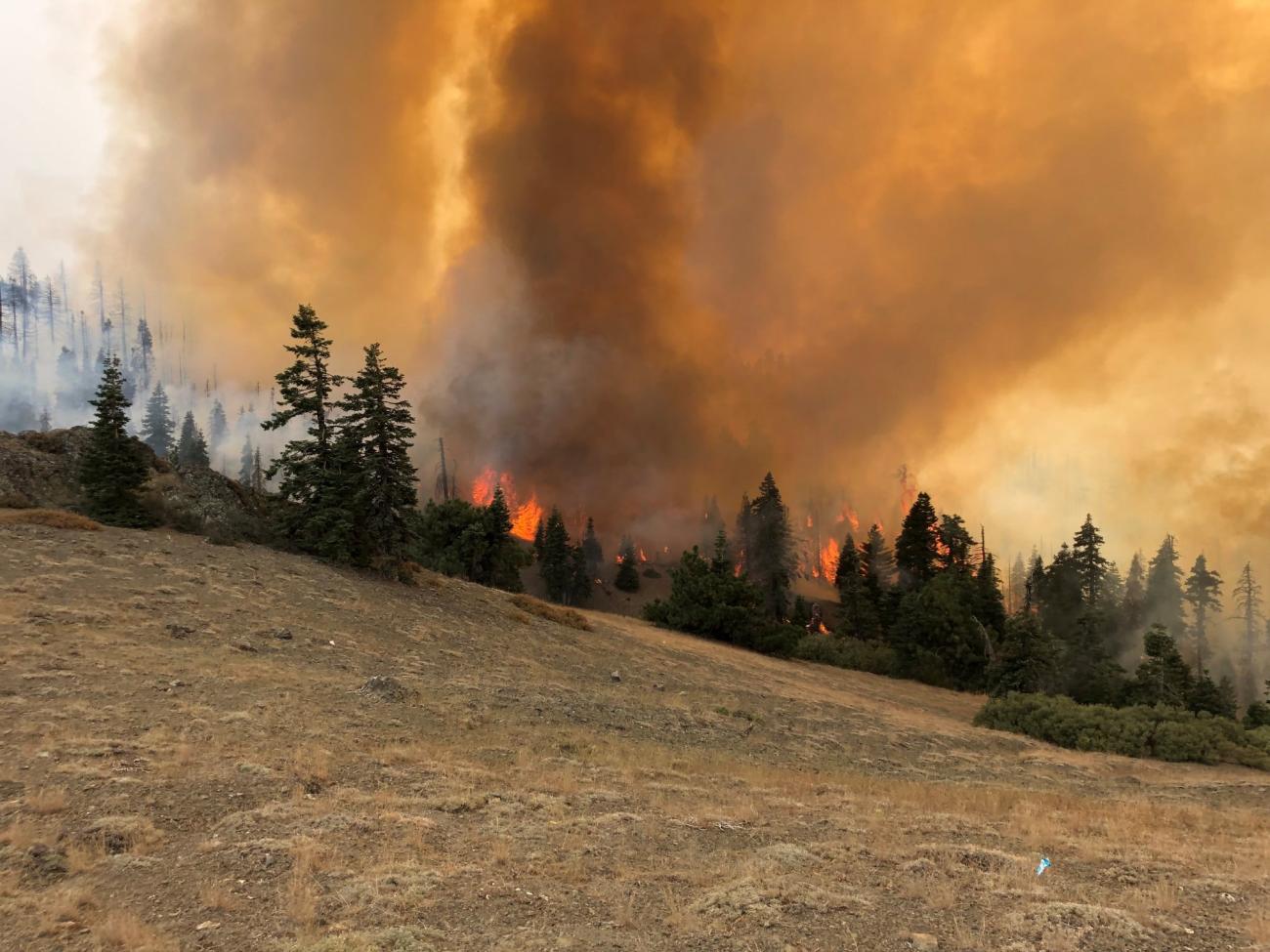
Photo credit: August Complex Fire, US Forest Service
The Team’s Findings
Plantinga, Walsh, and Wibbenmeyer, found that firefighters effectively protect structures in inhabited areas from harm; their results indicated that wildfires in the Western US are 16% more likely to stop spreading as they approach homes. However, their modeling efforts had another interesting takeaway: wildfires are even more likely to stop when the value of those homes is higher; in fact, higher property values increase the likelihood of suppression by another 6.2%.
They also found that firefighters were not only more effective at protecting communities with high-valued properties, but individual homes with high values. As Plantinga put it, “let's say a fire is burning towards $10 million worth of homes: that fire has a greater chance of stopping when it’s approaching ten $1 million houses, as opposed to a hundred $100,000 homes.”
What’s at Play?
To parse out why this might be happening, it’s important to understand the high-pressure environment in which fire managers operate. Fires are highly unpredictable, and fire incident commanders must assess where a fire is on the landscape in real-time and make predictions about where it might go in the future. They also have to account for topological variations, climatic conditions, and valuable infrastructure or “assets” on the landscape.
“What all of these research projects have in common,” says Anderson, a SERI-Fire member who was not involved with this study, “is pressured decision making. A fire is burning—so where are you going to put your resources? Well, there’s a house right there, so let’s take care of it.”
Yet those in charge of deploying fire suppression assets do not own the assets they are charged with protecting, so Plantinga notes that their decisions can depend on “intrinsic motivations, pressure from politicians and stakeholder groups, and concerns over the career or personal liability consequences of their decisions.”
In short, fire managers must make difficult, high-impact decisions under stressful conditions—and quickly.
“These are hard allocation problems to solve,” said Anderson. “It’s easy to take a shortcut, but shortcuts have consequences…often we use salience or heuristics as a decision process. We lean towards what our gut tells us is the right thing.”
When pressed about the policy implications of these findings—which can easily be interpreted to say that firefighters care more about protecting the property of rich people—Plantinga indicates that it’s important for decision-makers to be aware of these findings, and that “they should examine this so they spend public resources fairly. If there’s a problem, these are the kind of results that they can reflect upon and adjust.”
According to Anderson, “we need to find ways to slow down [the decision-making process] and examine and eliminate biases as best we can.”
Looking Forward
As climate change increases the frequency and severity of wildfires and other natural disasters, it’s crucial to ensure that emergency resources are being properly deployed. While it’s difficult to model responses to disasters that lack effective means of suppression, like earthquakes, the model could be useful in other emergencies that can be mitigated in real time, such as flooding events.
Plantinga’s study affirms that we are on the right track: “fire managers are doing their job and are effective in protecting assets that people care about,” he said.
The next step is ensuring that disaster responses are applied equitably among all communities.
About the authors
Caitie Reza (MESM '22) is a Southern California native who enjoys writing, running, and exploring new places. Before coming to Santa Barbara to attend the Bren School, she spent time doing research in Arctic Alaska, Michigan, New Zealand, and most recently the middle of the North Pacific. Inspired by the people and creatures in the places she’s visited, Caitie hopes to continue studying threatened ecosystems and working closely with the stakeholders within them.
Matt Koller (MESM '22) is a writer and photographer currently based in Santa Barbara, California. Before coming to Bren, he worked as a whale-watching guide in Maui, a naturalist photography guide exploring the glaciers of Southeast Alaska, and a photographer in the mountains of Colorado. Matt is a firm believer that the quickest way to fall in love with the natural world is to spend time exploring it, and spends most of his free time surfing, hiking, biking, skiing, and dancing in the outdoors.
